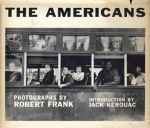Jimi Hendrix with his Fender Stratocaster guitar (Royal Albert Hall, London, 1969)
—
This chapter begins with Maya Lin and her Vietnam Veterans Memorial (Memorial to the Fallen of the Vietnam War), one of the most sophisticated and far-reaching projects throughout the American twentieth century. The project started with a contest, won unexpectedly by a very young student without anything built before, with an idea quite distant from what we normally intend as a “monument”.
Maya Lin, Vietnam Veterans Memorial, Washington DC, 1982
—-
A black marble wall, in the shape (in terms of floor-plan) a broken line. Engraved on the wall, the names of all the Americans soldiers fallen in the conflict, in chronological order (upon their date of death). Once the visitor finds the desired name, he/she can transfer the name over a sheet of paper (via frottage). In this extent the paper with the name becomes a physical evidence of memory.
Another interesting and important feature is the polished black marble working as a mirror. Once you find the name of your dear, your retina sees his name with your image superimposed on it.
The history of the project is long and complex, a rare example where a single individual can complete a project designed for a large group of people.
Another classic example where we have a single person working for a big group of people is Harry Beck and his map of the London Underground (1931).
Beck had the intuition to organize visual information referred to the “tube” forgetting the actual geographic distances. Assuming a traveler in the subway who does not actually care about the real distance between Piccadilly Circus and Marble Arch, Beck simply drew the simplest and clearest representation of the stops between “A” and “B” (and the other lines intersected in the route). To us this seems a quite obvious choice, yet, for forty years no one ever thought about it (until Beck’s map, the subway maps were representing actual and real distances).
Before Harry Beck (above), Harry Beck London Underground Map, 1931 (below)
Returning to our “4 by 4” grid, when we can talk about the case of an individual for the larger group we are talking about someone who sometimes starts small (individual for the small group) later on growing up.
In this extent, in the DNA of the individual who works for the small group there is often the potential to grow and expand his user group. Enzo Ferrari (rather than Bruce McLaren) starts to build his cars for himself, then for a very restricted group of clients. As the commercial success of his activities increases (as well as his sport awards do follow), an expansion of the productive structure follows (passing from the condition “alone” to the “small group”, reaching in several cases to condition of a “big group”) (28).
Ferrari (designed by Pininfarina) 250 GT (195)
—-
A field of activity where this pattern of action (single person for big group) appears to be the typeface design (either classical rather than modern). That special world where Giambattista Bodoni goes hand in hand with Paul Renner, where Eric Gill drinks a cup of tea with John Baskerville, Aldus Manutius and Jan Tschichold. A world where you get stabbed for a glyph or the appropriate use of the golden ratio.
Bauer Bodoni typeface, Heinrich Jost for Bauer, 1926
—
For the purposes of our discussion the galaxy of “graphic designer” (and even more of the sub-family of typefaces designers) is incredibly fascinating because of the original tenet upon which all these people work.
Paul Renner, Futura typeface, 1927
—
Just as an architect or engineer are generally aware that their entire professional life will be spent working together with thousand other people (together with they will be always entangled in moreless exhausting negotiations), the graphic designer is quite conscious of being a special god of an universe in the shape of the sheet of paper they are working on. Being the master of the universe (even if it an A4 format universe) is a wonderful feeling, although with a potentially devastating effect in terms of social skills. In short, if the reader has a distinct character for the self-referentiality, the design of typefaces could be his field of activity.
Eric Gill, Gill Sans typeface, (1927/30)
—
Even more extreme is the world of photography. This is in some extent for obvious ergonomic reasons (you can write a book together with your friend, while to take a picture with a second person becomes immediately a quite technically complex task), but apart from this, photography is a discipline generally practiced “alone”.
Diane Arbus, “Identical Twins”, 1967.
We have a great passion for photography, but are fully aware that if we start talking about Robert Frank, Diane Arbus and Francesca Woodman we well get surely adrift. In order not to get lost, we can make a quick reference to the work of the great American photographers for the Farm Security Admistration (Walker Evans and Dorothea Lange for all), a project where the single individual had to act within a complex network of people coming to an end result definitely “collective” (29).
Robert Frank, “The Americans”, 1955
—
The other natural example of individuals working for a larger group of people is typical of the world of literature, visual arts and music. Think to the artist, struggling alone with his piano, delighting the audience of the concert hall. In this case the individual is only apparently alone. In fact the individual is very seldom alone.
The concert is supported by a service system that makes the concert happening: selling tickets, cleaning the room, tuning of the piano. Furthermore, perhaps more interestingly, the pianist is part of a man-machine (in this case: man-piano). If we follow the theory of the Actor-Network of Latour, Callon and Law, we must recognize that objects, like humans, have the capacity to act, be used, and to involve people in certain ways – although the objects are devoid of full intentionality (30).
Glenn Gould
—
In this perspective, the music and the concert are a network of relationships and interactions: the superb performance that takes place in the hall is produced by the virtuosity of the musical instrument in tension and dialogue with the skill of the musician, both actors in the network involving the skill of who designed the hall itself as well as the skill of the public (behaving himself as perfect “public”).
Teatro La Scala, Milano
—
The designer can then, once you understand the principles of user-centered design, profitably exploit the networks of things and the various persons involved (collectively called “actants”: whom who acts). And ‘no doubt that we live in a world where every possible “objects” and “thing” falls into a spiral of progressive “commoditization.” These “objects” always cost less, and yet they continue to act upon us. At the same time the networks of relationships between actants defined by individuals, institutions (public and private), technology (new and old), becomes more and more relevant. Finally, if the world works quite differently than before, why do the various institutions shaping our lives (schools, media, etc), do not notice and do not change as well?
Berlin, Loveparade, 2008
—
28. We would like to note that the mechanism upon which you move from one family to another (being small and then growing up), typical of earlier periods, in this moment seems to be locked and not completely open. Nowadays if you start your activities in a DiY mode, you will not become IBM. And if you go to work at Mitsubishi Heavy Motors, you’ll never come (mentally) out of it.
29. The loneliness of the photographer, with its advantages and disadvantages, seems to be one of the invariant of this well-establish profession. Perhaps it is worth to mention here some relevant exceptions, one of these being the Magnum Photos agency. Founded in 1947 by some of the greatest twentieth century photographers (we can mention Capa, Seymour, Cartier-Bresson), it managed to attract the brightest talents until today. Is defined by Cartier-Bresson as: “…a community of thought, a shared human quality, a curiosity about what is going on in the world, a respect for what is going on and a desire to transcribe it visually.”
Rene’ Burri / Magnum, “Che Guevara”, Havana, Cuba, 1963
—
30. If it seems strange to give the objects all these possibilities, but do not provide them with intentionality, consider a scale that goes from man to hammer. In between is your cat, which has its own modest intention and can make you doing various things.
Antonio Stradivari, “Auer” violin, 1690
—
A final note before to move to next class
Perhaps the most appropriate reference to start this page would have been a Stradivari or a Guarneri violin (instead of Jimi Hendrix and his guitar). We like, however, to emphasize that fact that the relationship between design and artistic virtuosity runs in parallel in each epoch. Purists might have something to say about choosing the Fender Stratocaster rather than the Gibson Les Paul. In this extent, none of the countless artists who have used the Gibson Les Paul (we can just mention Bob Marley buried with his Gibson Les Paul and a Bible), can match the iconic Jimi Hendrix playing his Fender.
Les Paul, “Gibson Les Paul”, detail, 1952
—
















